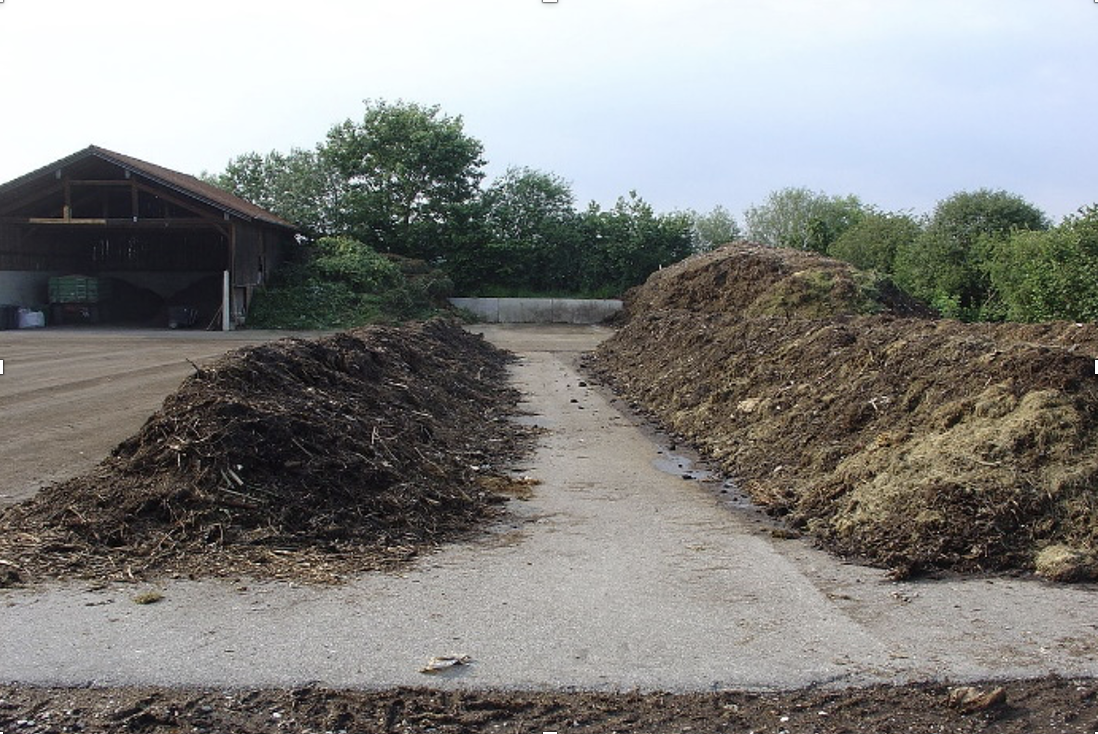Additional Uses for the Landfill Site
Natural synergies exist for siting additional uses at the landfill. Existing landfill utilities and site infrastructure, such as stormwater control systems, make the landfill property attractive for new opportunities. For example, organics management and renewable energy facilities for solar, wind, and battery storage are frequently installed on the grounds of operating and closed landfills. These types of facilities also offer the opportunity for public-private partnerships that could include financial incentives for Ontario County.
Various potential uses were explored for the landfill site as part of the landfill study and are outlined below. More details about each waste management topic are included in the landfill study and can be found here.
It’s important to note these are concepts only.
ORGANICS PROCESSING / COLLECTION
Anaerobic Digester
A facility that diverts waste from landfill disposal by turning organic material such as food waste, biosolids, and manure into biofuels and soil amendments. This facility would require the collection of source-separated organics (SSO), which could be done either with curbside pick-up service, drop-off locations, or a combination of both.
Compost Facility
Composting is a managed aerobic process in which organic materials are broken down into a soil-like product by microorganisms. In addition to diverting waste from landfill disposal, a compost facility would produce a valuable soil amendment and reduce greenhouse gas emissions from landfills.
Regional Organic Management Options
Under this alternative, food waste generated in Ontario County would be transferred to an existing regional organics processing facility. Currently, Generate Upcycle - Digester located in Auburn, NY is a potential option. However, other similar regional digestors are in operation in Buffalo and Lewiston, NY.
RENEWABLE ENERGY USES
New York State has adopted one of the more aggressive green power requirements in the country with the goal of utilizing 70% renewable energy by 2030 and a zero emission electric grid by 2040. Renewable energy uses offer alternatives to the use of fossil fuels to make electricity and have been proven to be a means for stabilizing the local electric grid, increasing system reliability, reducing line losses, and decreasing congestion.
Community Solar
By their nature, community solar projects are structured as a means for residents, commercial entities, and governmental entities to purchase green power without the need for direct connections, having equipment on their property (or rooftops). Consumers who subscribe to a community solar project generally recognize a 7 -10% savings on their monthly electric bills (at no cost to them). The delivery of the electricity would still continue to be provided by a subscriber’s host public utility.
Wind
Wind farms are growing in popularity as an alternative to fossil fuels. According to the New York wind resource mapping, a section of the eastern portion of the landfill property is located within an attractive wind area. Town zoning for certain types of turbines would need to be taken into consideration.
Battery Energy Storage System (BESS)
BESS projects are a growing renewable energy technology. This type of technology enables power system operators and utilities to store energy for later use. A BESS is an electrochemical device that charges (or collects energy) from the grid or a power plant and then discharges that energy later to provide electricity or other grid services when needed.




